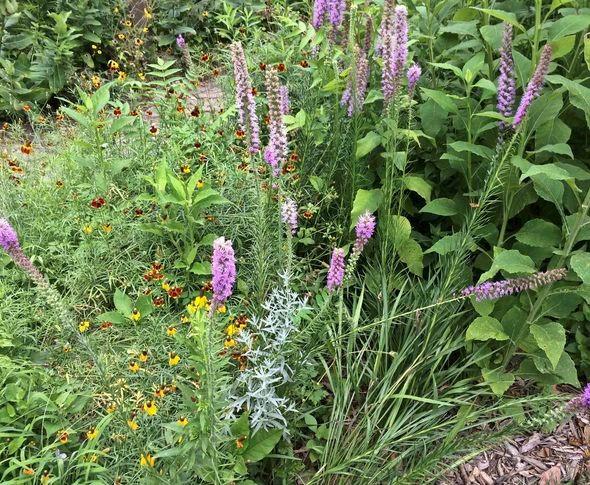by Jill Maidhof
I’m a gardener. Not, by a long shot, a master gardener who “amends” her soil, keeps a journal and plans ahead so that one plant blooms right after its neighbor has shed its flowers. Mainly I just lug, dig, pluck and watch nature do its thing. The back yard, filled with mostly native plants and a little unruly compared to my neighbors’ grass flats, is a little Eden. It not only delights me; it makes me a better person.
 I see wild shoots all over my yard, each demanding a portion of the meager sunlight that my trees are willing to share and (maybe because I’m a Jewish educator), my mind goes to a question that the first century sage Hillel put to his students:” If I am not for myself, who will be for me?”
I see wild shoots all over my yard, each demanding a portion of the meager sunlight that my trees are willing to share and (maybe because I’m a Jewish educator), my mind goes to a question that the first century sage Hillel put to his students:” If I am not for myself, who will be for me?”
There they are, uninvited sprouts literally standing up for themselves in order to claim their space in the sun—or rock crevices or the most inhabitable corner of my yard. This, despite the fact that they’re never fertilized or fed and their only source of liquid refreshment is Mother Nature. Things are even harder in the winter when all the action takes place below the surface. Yet they lay down roots, take what nourishment they can and show up the following summer. Talk about “being for themselves”! How can I fail to see that if I’m to receive my share of light, I’d best find my space and take my place? That I, like my little plants, have to sustain the will to thrive, even when my own world feels cold and dark as a frozen underground?
But I know something that my little plants do not, and that is Hillel’s second question: “If I am only for myself, what am I?”
The truth is that my wildings are unscrupulous land grabbers and if I don’t control them they’ll wreck my little Eden. Before my eyes I see what happens when beings take more than their share: they threaten others around them. The key is to know how much space to take. This is the Jewish definition of humility: Finding one’s space and taking one’s place, no more and no less. This teaching alone makes up for my aching back and hours of raking, but there’s more!
If you know Hillel, you know that he asks one more question: “If not now, when??”
Again, the plants provide a concrete example of Hillel’s wisdom. Exactly according to schedule (their own, no one else’s), plants make their appearance, bloom, shed their blossoms and die back. We humans can try to extend their season or force more blooms or accidentally mow them down, but basically, a plant’s “now” reflects an exquisite sensitivity to their environment: ground conditions, hours of sunlight, air temperatureand more. It‘s only when conditions are right that they take action. What wonderful role models they are, of when to be still and patient, and when to be active and raring to go.
Thank you Hillel! Thank you, back yard! I’ll have more to share, later in the summer. I’d love to hear your Lessons from the Garden—send them in the block below!
Copyright © 2024 Chai Mitzvah. All rights reserved. Website designed by Addicott Web.
Leave a Reply